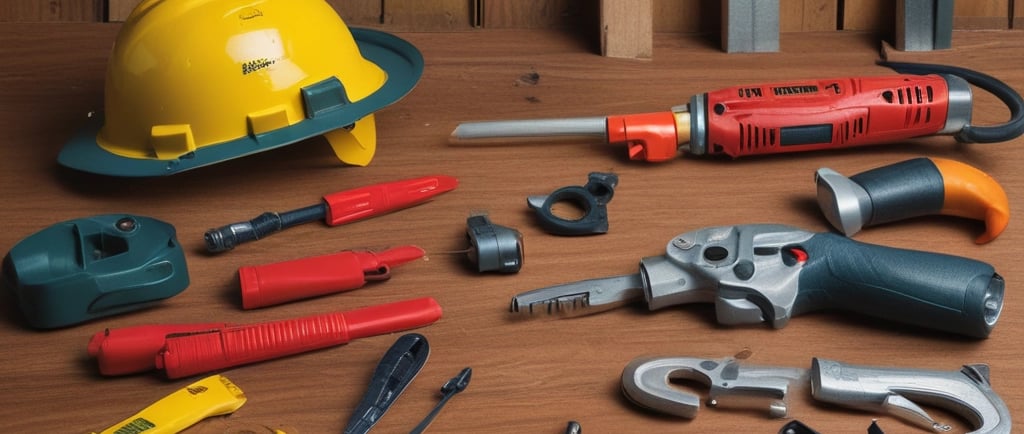How to Match Accessories to Your Tool Brand
10/29/20254 min read


Understanding Your Tool Brand Identity
In the world of tools and accessories, each brand carries a distinct identity, encompassing its core values, aesthetic appeal, and target audience. Recognizing your tool brand's identity is crucial, as this knowledge serves as a guiding principle when selecting complementary accessories. Each brand is imbued with its unique personality, which plays a significant role in shaping consumer perceptions and preferences.
A vital aspect of understanding your tool brand's identity involves analyzing its color schemes and design elements. For instance, a brand that emphasizes industrial strength may favor robust colors such as dark grays or metallic tones, while brands aimed at DIY enthusiasts might incorporate brighter, more inviting colors into their palette. These visual choices reflect not only the brand's personality but also its intended market and user experience. When selecting accessories, aligning with these color schemes can create a harmonious look, ensuring that all components appear well-integrated.
Moreover, each tool brand often adheres to a brand philosophy that defines its approach to quality, performance, and innovation. For instance, some brands prioritize sustainability and eco-friendliness, whereas others might emphasize cutting-edge technology and advanced engineering. Understanding these philosophical tenets can inform your selection of accessories that not only match your tools aesthetically but also align with the values you wish to project as a consumer.
By delving into these key factors—color schemes, design elements, and brand philosophy—you position yourself to make informed choices regarding accessory selection. This understanding ultimately enhances the overall cohesion between your tools and accessories, reinforcing the identity of your tool brand and elevating the user experience.
Choosing the Right Accessories
When selecting accessories for your tools, it is essential to consider a variety of factors to ensure that they complement both the functionality and the brand aesthetic of your tools. Each tool brand often has a distinct identity that can be reflected in the accessories you choose, such as protective gear, storage solutions, and additional gadgets. Understanding the compatibility of these accessories with your tools not only enhances your working experience but also emphasizes a cohesive look and feel.
Protective gear is perhaps one of the most crucial accessories. Depending on the tool brand, you may find personalized safety equipment such as gloves, goggles, and helmets that align with the brand's colors and designs. Choosing protective gear that fits well and is made from high-quality materials ensures safety while promoting a professional appearance that resonates with the brand's ethos. It is critical to evaluate factors such as fit size and material durability when selecting such gear, as these aspects can directly impact efficiency and comfort during use.
Storage solutions are another vital accessory type that should not be overlooked. Tool brands often provide custom-designed storage options, such as toolboxes or bags, that complement their product lines. These storage accessories not only protect your tools but also make transportation easier. When assessing storage options, consider the size, weight capacity, and organizational features to ensure they cater to your unique needs while remaining true to the brand’s functionality.
Additional gadgets, such as batteries, chargers, or attachments, can also enhance the overall functionality of your tools. It is essential to assess compatibility regarding features and materials with your existing tools to optimize their performance. Selecting gadgets that align with the specific characteristics and requirements of your respective tool brand can significantly enhance both the aesthetic and operational aspects of your tool usage.
Color Coordination and Aesthetics
When it comes to matching accessories to a specific tool brand, color coordination and aesthetics play a pivotal role. Utilizing color theory is essential in ensuring that accessories not only complement the tools but also reinforce the brand's identity. Different colors evoke various emotions and perceptions, which is why it's crucial to select hues that align with the brand's message and values.
Many successful brands effectively leverage their color schemes to create a strong visual identity. For instance, a tool brand that predominantly uses bold colors, such as red or black, may communicate strength, durability, and reliability. Accessories that mirror these colors not only enhance the visual appeal but also create a cohesive look that is easily recognizable to consumers. By incorporating brand colors into the accessory design, businesses can significantly enhance user experience, making a clear connection between the tools and their associated accessories.
Additionally, understanding the psychology behind color can inform the design choices for accessories. For example, blue is often associated with trust and professionalism, making it an excellent choice for brands aiming to convey reliability. Accessories designed in this color can instill confidence in users and reinforce their choice of tools. Harmonizing accessories with a tool brand's color palette can distinguish a product line in a competitive market, ultimately driving consumer loyalty and recognition.
Moreover, exploring various color combinations can yield innovative aesthetics that captivate buyers while remaining true to the brand's identity. Experimenting with complementary and contrasting colors can create dynamic visuals that engage customers. The goal should be to achieve a balance where accessories not only serve a functional purpose but also become an extension of the brand itself, enhancing both aesthetics and practicality.
Case Studies: Successful Accessory Matches
Examining case studies of successful accessory matches provides valuable insights into brand perception and market performance. Notable brands demonstrate how cohesive integration of accessories can significantly enhance consumer appreciation and loyalty. For instance, the tool manufacturer Stanley has effectively paired its tools with a range of high-quality accessories, such as tool belts and bags. This alignment has bolstered its brand image, as customers appreciate the reliability and pragmatism that these accessories provide, further solidifying Stanley's reputation as a leader in tool manufacturing.
Similarly, DeWalt has adopted a strategy that emphasizes complementary accessories designed to elevate the user experience. By creating an ecosystem around its power tools — including drill bits, saw blades, and battery packs — DeWalt not only improves the functionality of its main products but also fosters a sense of brand loyalty. Customer feedback has consistently shown that users prefer to stick with DeWalt accessories, as they are designed specifically for compatibility, thereby enhancing efficiency and performance. This synergy between tools and accessories has positively impacted customer satisfaction and generated increased sales across the board.
Another example is Bosch, which emphasizes sleek design and innovation in its tool accessories. By introducing unique accessories, such as precision saw blades and advanced charging solutions, Bosch has established a clear association between its brand and advanced technology. This successful match not only appealed to a tech-savvy consumer base but also improved market performance, as customers began to recognize Bosch as a leader in both tools and their subsequent accessories.
These case studies illustrate the significant impact that successfully matched accessories can have on brand perception and market performance. By analyzing and implementing strategies analogous to these brands, practitioners can amplify their tool brand's appeal and foster deeper customer connections.
